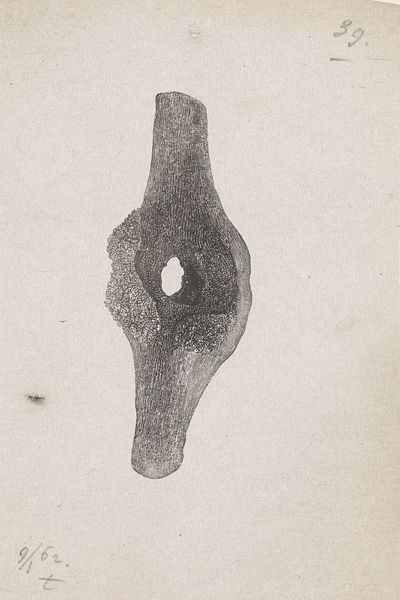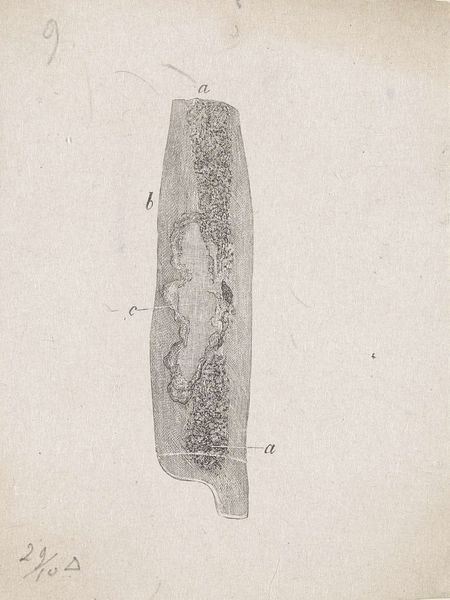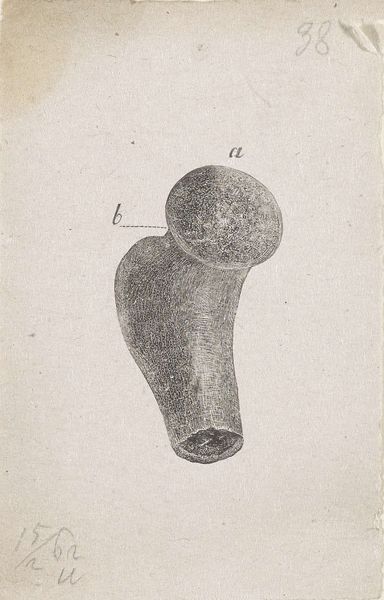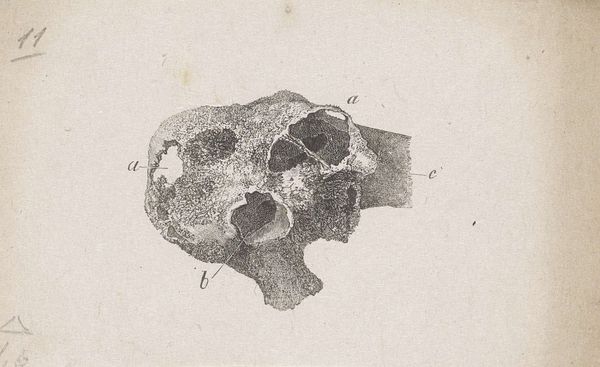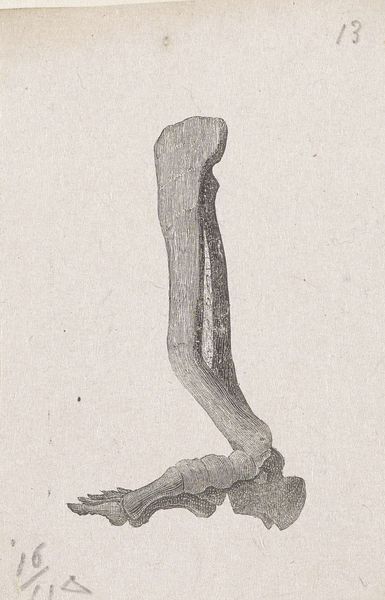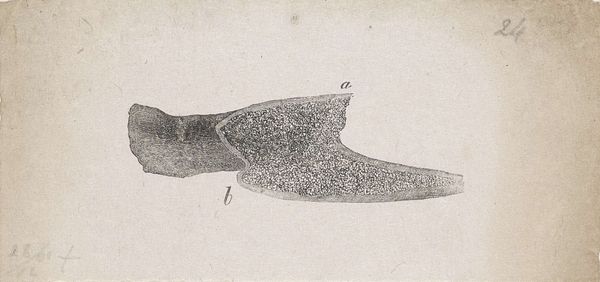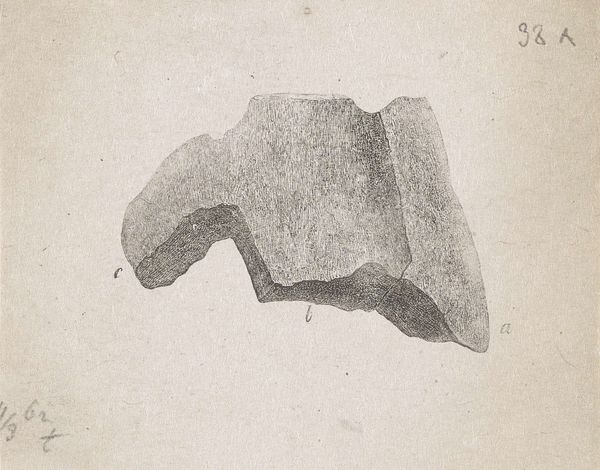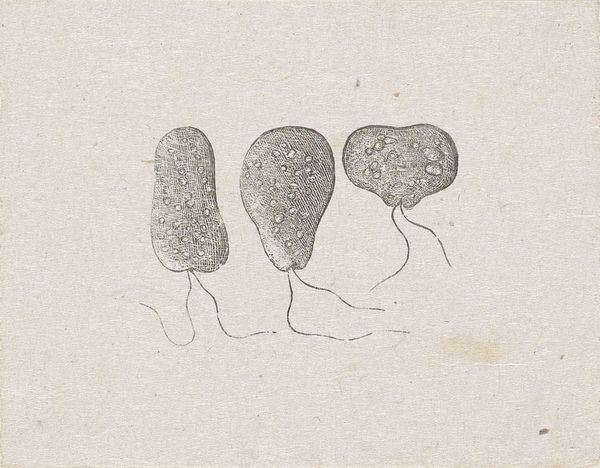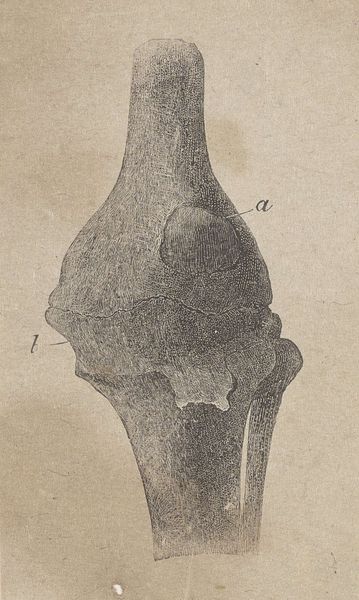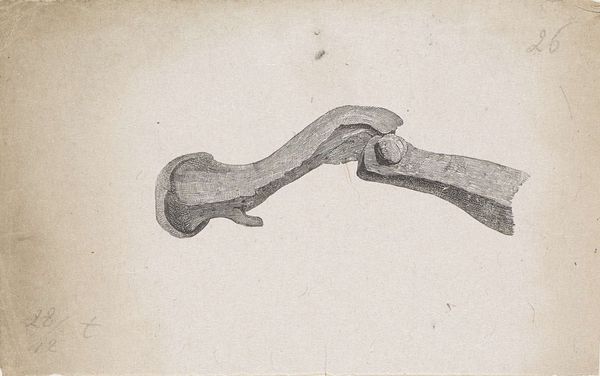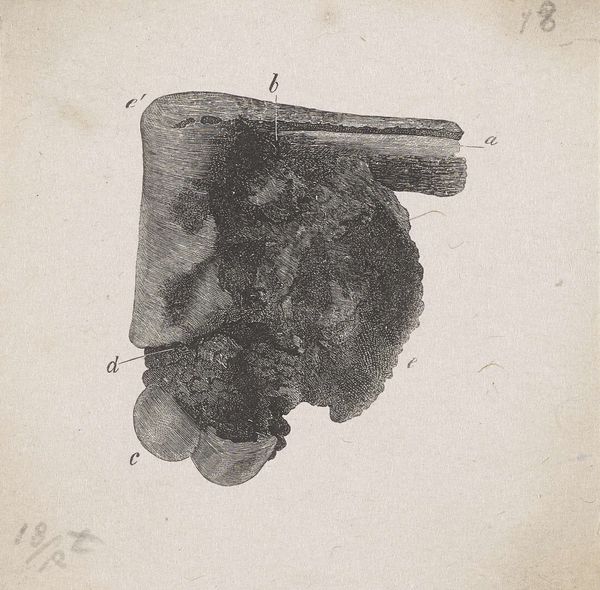
drawing, paper, graphite
#
drawing
#
narrative-art
#
paper
#
graphite
#
academic-art
#
realism
Dimensions: height 81 mm, width 55 mm
Copyright: Rijks Museum: Open Domain
Editor: So this drawing, "Menselijk bot met een afwijking" from somewhere between 1836 and 1912 by Isaac Weissenbruch, is surprisingly… compelling? It's just graphite on paper, but the detail is quite striking. What strikes you when you look at this drawing? Curator: Immediately, I think about the social implications of such a meticulous rendering. Consider the labour involved in producing this drawing. Someone, likely within an academic or medical context, painstakingly translated the physical reality of a deformed bone into this representational image. Why graphite? Why paper? These are relatively inexpensive, readily available materials – what does that say about the intended audience and purpose? Editor: That's a really interesting way to approach it! I was focused on the artistic skill, the way the light is captured with just graphite. Curator: Precisely! That "skill" is a constructed value. The material constraints – graphite’s texture, the paper's surface – influenced the "artist's" hand. The image’s purpose surely dictated the choices in materials. Was this meant for a medical textbook, a teaching aid? Who would have consumed this image, and what social hierarchies were at play in its creation and dissemination? Editor: So, you’re saying it's not just about the bone itself, but the entire system that allowed this image to be created and shared. The drawing’s materiality reveals that system. Curator: Exactly! Consider the 'Realism' style tagging. What realities is Weissenbruch crafting, and to what ends? Are those realities medical or, by the late 19th century, also taking cues from scientific advancements like photography? All of this influences not only artistic output but public understanding and acceptance. Editor: I never thought about it that way. It makes you question everything you see, not just in terms of aesthetics but also its purpose and creation. Thanks, I'll definitely view art with a new set of questions now. Curator: It has been my pleasure! Seeing art is always a process.
Comments
No comments
Be the first to comment and join the conversation on the ultimate creative platform.
